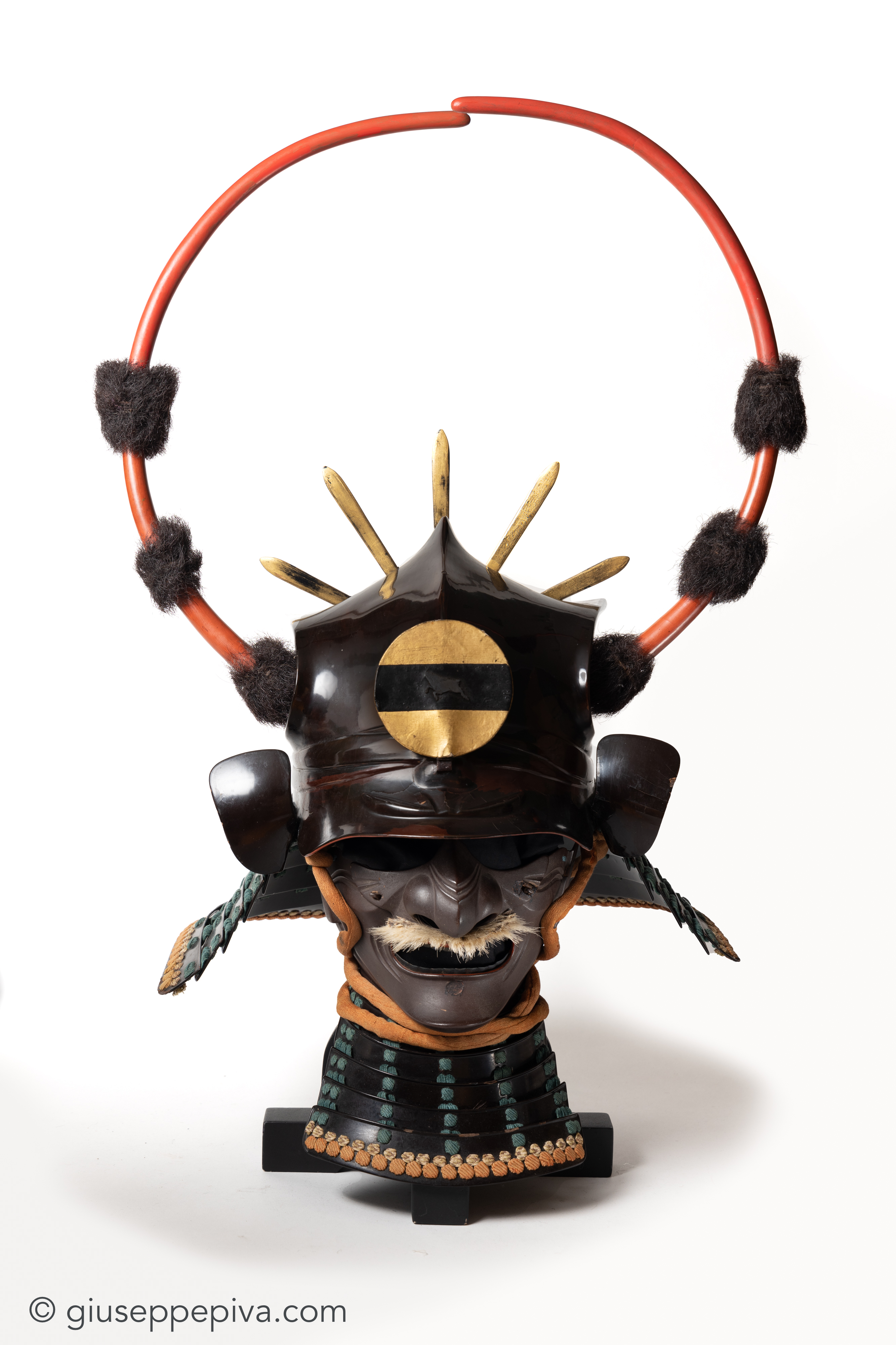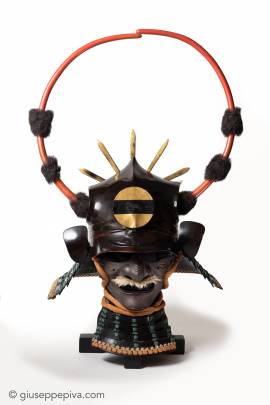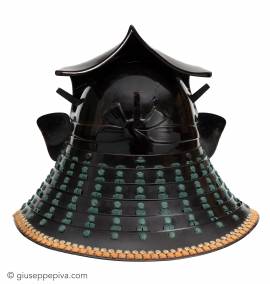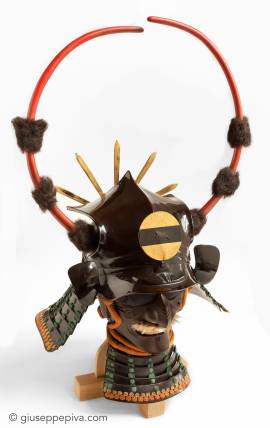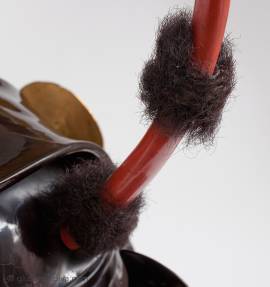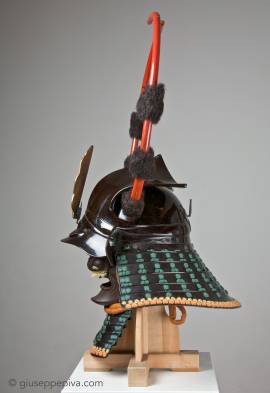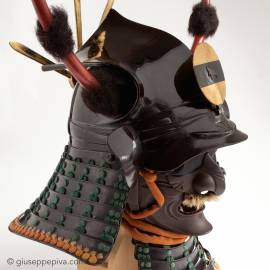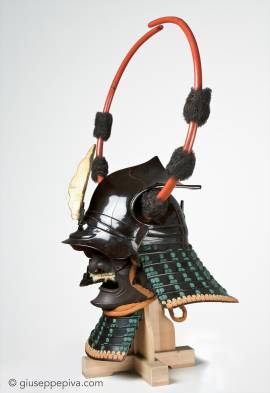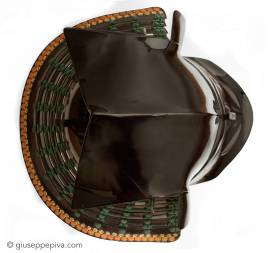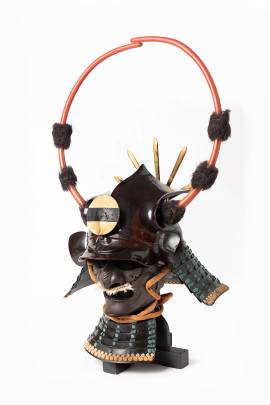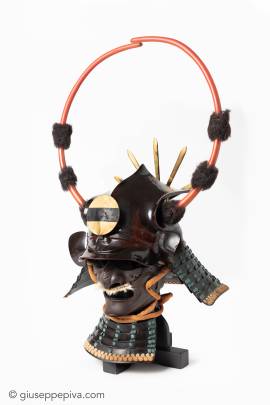Tōzukin-nari kabuto and menpō
Samurai helmet in the shape of a soft cloth cap
Edo Period, 18th century
Bibliografia:
G. Piva, Le armature dei Samurai: Luni Editrice, 2020, pag. 60
Kawari kabuto are helmets with unusual designs that were popular during the Momoyama and Edo periods. A number of them drew inspiration from traditional Japanese and Chinese headgear and caps. This kabuto belongs to this group and takes the name after the tōzukin, a kerchief worn in cold weather that covers the entire head, excluding the eyes. The helmet is in fact shaped to resemble a cloth tied around the head and fastened in the back. This intricate form was achieved by molding harikake, a type of papier-machê mixed with urushi lacquer, over a zunari-bachi, a hemispherical bowl which is the actual head protection. The final shape is quite complex, with a three-dimensional interplay of opposing lines that is uncommon for helmets of this type. The presence of as many as four applied ornaments enhances the visual impact of this kawari kabuto, particularly the two long horns covered in shu-urushi (red lacquer) with horsehair applications.
The menpō is a ressei-type mask, in original combination with the helmet.
Price: 28,000 €
Inventory Nr: 1789
Info works
Copyright © 2016 - giuseppe piva - VAT: 05104180962


